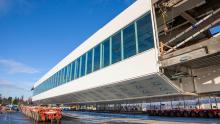Footer Menu
- SEA Airport
- SEA Airport Home
- Airlines & Destinations
- Parking at SEA
- Ground Transportation
- Security Screening & Checkpoints
- Dining, Retail & More
- Customer Services & Amenities
- International Travel
- Accessibility at SEA
- Maps
- SEA Airport Employees
- Leasing & Tenant Resources
- Air Cargo
- The Conference Center at SEA
- First Amendment Activities
- SEA Airport Environmental
Footer copyright section

© Copyright 2025 Port of Seattle. All Rights Reserved.


